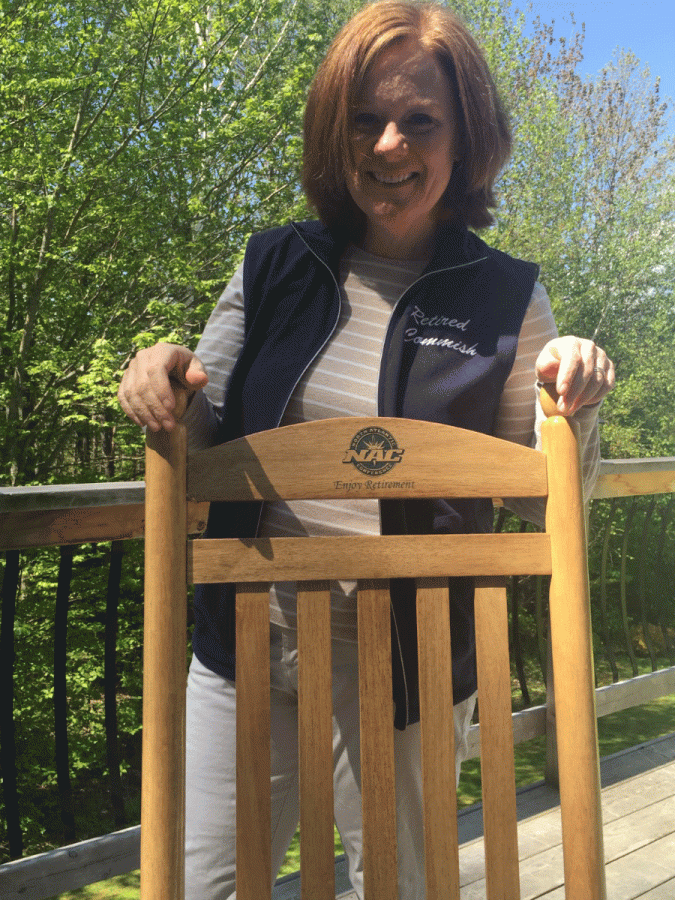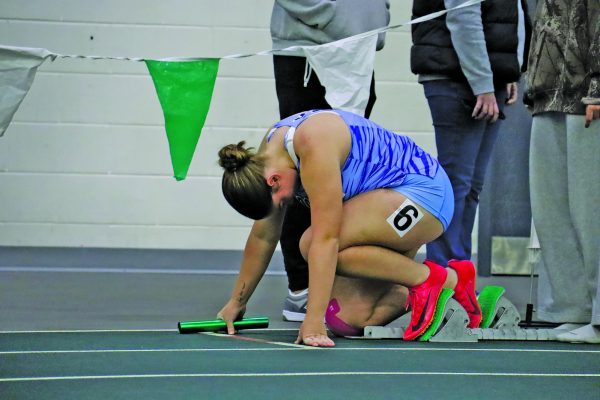The history of the NAC and its future
Editor’s Note: This article is the second of a six-part series devoted to the National Collegiate Athletic Association, its evolution, and the issues confronting it today. This particular story is the first of a two-part feature about the NAC.
The North Atlantic Conference is a NCAA Division III conference that works with 12 institutions in the states of New York, Vermont, and Maine.
The idea of first starting this conference came in the fall of 1996, as Bay Path, Lesley, Lasell, Wheelock, Maine Maritime Academy and the Massachusetts College Of Pharmacy explored ways to create a conference to give women an opportunity to compete at the national level through NCAA DIII tournaments.
In the spring of 1997, the conference was officially formed and was first known as the North Atlantic Women’s Conference (NAWC). Mount Ida, Becker, and Elms later joined in the fall of 1999, and in that same year, the NAWC was renamed to the NAC to include men’s sports in competitions.
The conference continued to expand rapidly, adding Castleton State College and Johnson State College in 2002. The University of Maine-Farmington, Husson University and Thomas College joined in 2003, which brought the membership up to 13 institutions.
From 1997 to 2004, the NAC had no commissioner, which wasn’t uncommon at the time. For those seven years, the head of the conference was a yearly rotation of athletic directors of full-member institutions. Then in May of 2005, Julie Muller was hired as the part-time commissioner of the conference. Muller came to the conference from Stony Brook University, as she was their assistant athletics director for student-athlete services. In a recent interview with Basement Medicine, she mentioned that she wasn’t really familiar with the conference before she applied for the job but was interested in the opportunity because it gave her some flexibility.
“It was a lucky situation,” she said. “It was a part-time job that I would be able to take on and still figure out what else I wanted to do, [whether] I wanted to go back to school or whatever, and then it just evolved into a full-time job. It was probably the best job I’ve had in my career.”
Muller started the NAC office at her house in Whitingham, Vermont. In her first three years, she worked at getting the day-to-day operations in check, as well as many external factors to grow the conference.
“The commissioner serves as the contact between the membership and the NCAA, and also the conduit between the athletic directors’ counselor and the president’s council,” she said. “There’s the external facing piece and then there’s the internal pieces, such as making sure that bills are paid, awards are ordered and compliance questions are answered for the membership.”
She was eventually able to work in a full-time position as commissioner with help from then- Castleton President Dave Wolk to get grants from the NCAA to better fund her salary. Later on, she was able to expand her office with an additional part-time role for Jeff Weld, who was the Communications Coordinator in a part-time capacity.
After a year with Muller on the job, the conference started to shrink as some Massachusetts institutions like Mount Ida and Lasell College left the NAC as full-time members.
A year later, the rest of the Massachusetts schools followed suit with Bay Path, Becker, Elms, Lesley and Wheelock leaving the conference, bringing the full-time membership down to six institutions.
Muller noted that many schools in the NAC were trying to create and join this conference for the sole purpose of getting an automatic qualifier for the NCAA national tournaments each year. They were so desperate to get into a conference that the geographical locations and level of competitions at these different universities and colleges became a problem.
Muller and the NAC were forced into a difficult position, as conferences need seven members to earn an automatic qualifier. However, the NAC was fortunate to have Green Mountain College and Lyndon State College in the pipeline to become full-time members, as they were in the process of becoming DIII institutions.
They were able to hold on to many of their sports’ automatic qualifiers except for women’s lacrosse and men’s baseball, due to some full-time members not sponsoring the sport. To solve this problem, the NAC worked with the Northeastern Athletic Conference (NEAC) to join forces in these specific sports so that teams could still earn qualifiers to the national tournaments, as they hit the minimum number required to earn automatic qualifiers.
Even with eight full-time members, Muller and the conference were still looking for additional members so that they could get to 10 member institutions, as it’s the average number for many conferences in DIII. Their search process came to an end in 2011, as New Hampshire schools Colby-Sawyer College (CSC) and New England College (NEC) joined the conference as full-time members. These two schools were originally in the Commonwealth Coast Conference (CCC), but the conference had an implosion in the early part of the decade, leaving several schools without a home.
“That opened up an opportunity for the NAC to accept New England College and Colby-Sawyer,” Muller said. “They sort of made perfect sense for us because they were that link between the Vermont and Maine institutions in terms of location. They were sort of central to most of our schools and they offered the right sports. It was a great, great fit and we were so fortunate for that to happen, and I think it was working well.”
The NAC was going steady from that point forward with a healthy membership. They continued to grow, and the NAC was then able to add another full-time position in the conference office with the role of associate commissioner going towards Shannon O’Brien in 2014.
Then in early 2016, Muller announced her intention to retire as commissioner at the end of the academic year.
She mentioned it was a tough decision to step away, as she put in so much effort towards the conference and the relationships she made with administrators and coaches, but due to personal reasons, needed to step down.
Later on that year, Colby-Sawyer, New England College, Castleton University and Green Mountain College decided to step away from the NAC, bringing membership down to six. It was a surprise to Muller, as she didn’t think that the Great Northeast Athletic Conference (GNAC) and the Little East Conference (LEC) would look to add members, as Colby-Sawyer went to the GNAC and Castleton went to the LEC.
In fact, Colby-Sawyer announced their decision to leave the conference the same day that the NAC commissioner search committee was interviewing Marcella Zalot. Chairing the search committee and Associate Dean of Athletics at NVU Jamey Ventura mentioned the leaving of Colby-Sawyer to Zalot during the interview.
Zalot mentioned that Castleton was one of the driving forces behind the growth of the NAC, but Castleton thought that the LEC would be a better fit for them, as their athletic facilities were on the same level as other members in that conference, and it was a way to expand their recruiting market. The LEC has members from Connecticut, Rhode Island, Massachusetts and New Hampshire.
Green Mountain College left because they were leaving the NCAA altogether and joining the National Association of Intercollegiate Athletics (NAIA) to help with their declining enrollment issue. Institutions that participate in the NAIA can offer scholarships based upon athletic merit.
Muller mentioned that with Castleton leaving, it had a domino effect on Colby-Sawyer and New England College.
“I’m not sure NEC would have ever decided to leave to go to the New England Collegiate Conference (NECC) without Colby-Sawyer making the decision to leave to the GNAC,” she said. “I’m not positive that Colby-Sawyer would have decided to leave had Castleton not gotten the opportunity to leave. They all become related to each other, and it has the potential to create that sort of snowball effect that happens in 2016.”
Zalot and Muller both mentioned that the GNAC and the NECC have better geographical locations for Colby-Sawyer and New England College that don’t take such a huge toll on travel budgets and have access to a greater number of recruits. It’s a great sell to potential recruits that you play near their families and friends, and Massachusetts has a few areas, including Boston, that have a good market for recruiting.
Despite facing an uphill battle, Zalot decided to keep pursuing the NAC commissioner job and eventually earned that position in the summer of 2016. She had experience on multiple levels at the DIII level and thought the position of commissioner would be something new and different. She relocated the NAC office from Vermont to Waterville, Maine and began her work to bring stability to the conference.








